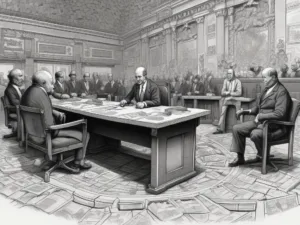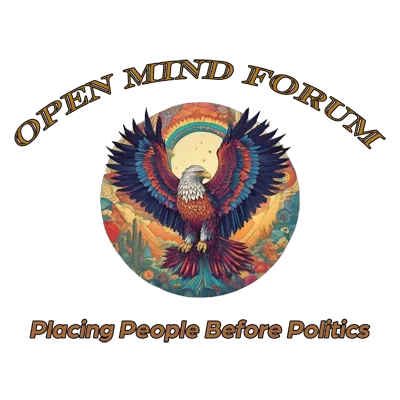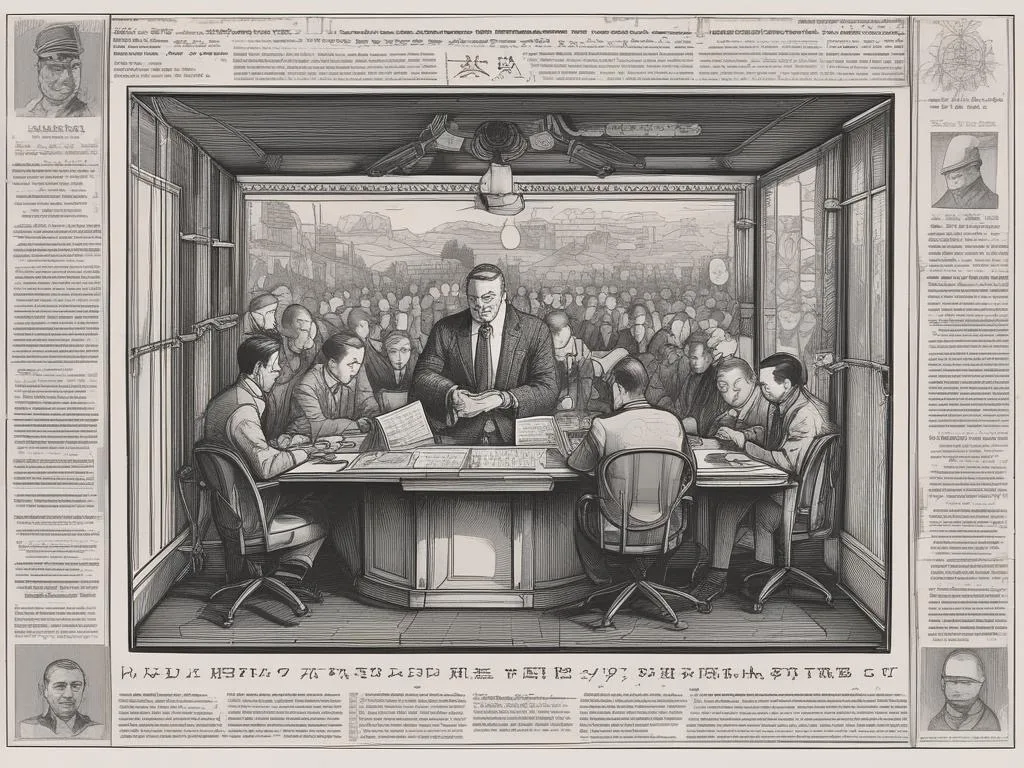The Danger of Corporate Control Over Media and Its Impact on Democracy
Introduction: Corporate Control as a Threat to a Free Press
However, with six corporations now owning approximately 90% of U.S. media, diverse perspectives and balanced reporting are increasingly rare (Bagdikian, 2004). This media consolidation did not happen by accident but followed significant changes in U.S. policy in the 1980s and 1990s. The

repeal of the Fairness Doctrine and the dismantling of the Glass-Steagall Act paved the way for unchecked mergers and acquisitions, centralizing control under a few profit-driven corporations. Thomas Jefferson warned that democracy cannot survive without a free press to hold power accountable. Yet, corporate-owned media increasingly blurs news with opinion, eroding democratic debate and limiting public access to diverse viewpoints.
The Fairness Doctrine’s Repeal and Lifting of Restrictions of Corporate Ownership of Media Outlets: The Shift Toward Partisan Media or Is the press really free?
The Fairness Doctrine’s repeal in 1987 marked a defining moment in U.S. media history. This regulation had required broadcast stations to present contrasting views on controversial issues, ensuring balanced coverage. Its abolition allowed media outlets to adopt ideologically driven formats, fueling the rise of partisan news, especially on talk radio and cable channels.
The most significant loosening of restrictions on corporate ownership of media outlets in the United States occurred under President Bill Clinton with the passage of the Telecommunications Act of 1996. This act, the first major overhaul of telecommunications law in over sixty years, substantially deregulated media ownership rules, allowing large corporations to own more radio and TV stations and consolidating media ownership across the country.
The Federal Communications Commission (FCC), the agency overseeing media regulation, had historically restricted the number of television and radio stations that a single company could own within a market and nationally. However, the 1996 act removed many of these restrictions, allowing for significant consolidation. For example:
- Radio: It lifted national ownership caps, allowing corporations to own multiple radio stations, with limits only based on market size.
- Television: It allowed broadcast companies to reach up to 35% of U.S. households, and later, under President George W. Bush, the FCC increased this cap to 45%, though Congress settled it back at 39%.
The act was promoted as a way to encourage competition and innovation. However, it led to a wave of mergers and acquisitions, concentrating media ownership in the hands of a few major corporations.
Fox News, launched in 1996, capitalized on this shift. Unlike previous networks bound by fairness requirements, Fox openly tailored its programming to conservative audiences, prioritizing opinion-driven content over objective reporting (McChesney, 2008).

Fox’s approach soon led to a wider trend where media companies used partisan perspectives as branding strategies, further polarizing audiences. For example, MSNBC adopted a similar model, catering to liberal viewers. The result is a landscape where networks serve as ideological echo chambers rather than balanced news sources, limiting access to opposing viewpoints. Without regulatory safeguards like the Fairness Doctrine, the public loses a comprehensive understanding of current issues, which threatens democratic debate by entrenching media-driven biases.
Neo-Liberal Deregulation and Corporate Media Control
Neo-liberal policies in the 1980s encouraged deregulation and consolidation across industries, including media. Is the press really free when Neo-liberal deregulation paved the way for corporate monopolies to take hold of news outlets? The Telecommunications Act of 1996 exemplifies how deregulation fostered media monopolies. The act removed caps on media ownership, allowing companies like Clear Channel to dominate radio. By 2003, Clear Channel owned over 1,200 radio stations, consolidating regional voices into a single corporate narrative (Pickard, 2019).
In regions where Clear Channel monopolized the radio market, local stories and diverse voices disappeared. To cut costs, the company replaced local programming with standardized content from headquarters, focusing on profit rather than community news. Consequently, regional news coverage suffered, and citizens became less informed about local issues impacting their lives. Neo-liberal policies, by prioritizing profit over public interest, have limited the press’s diversity, by restricting the free flow of information and diminishing journalistic integrity and enshrining this control into law.
The Conflict Between Corporate Profit and Public Accountability: Is the press really free?
Thomas Jefferson believed that a free press serves as a public watchdog, exposing abuses of power. However, today’s corporate-owned media often avoids investigating stories that might harm its financial interests. Is the press really free if it cannot act independently of corporate interests? The ownership of NBC by General Electric (GE) offers a striking example. GE limited NBC’s coverage on environmental issues due to conflicts of interest with its industrial operations, effectively shaping public opinion through selective reporting (Bagdikian, 2004).
Other networks exhibit similar biases. Comcast’s acquisition of NBC-Universal in 2011 expanded its control over both content and distribution. This vertical integration raised concerns that Comcast might prioritize its business interests over unbiased reporting, particularly in areas like net neutrality, which affects internet providers. In such cases, news coverage may omit critical issues to protect corporate agendas, restricting citizens’ ability to form independent opinions on policy matters. The conflict of interest inherent in corporate media ownership endangers democracy by limiting the press’s ability to hold power accountable.
The Influence of Digital Giants on Free Press Principles
The dominance of digital platforms like Google and Facebook introduces new challenges to press freedom. Is the press really free if tech giants control online information flow? Today, Google and Facebook capture over half of all digital advertising revenue, forcing news outlets to compete for ad dollars by tailoring stories to maximize clicks (Nichols & McChesney, 2013). In this model, sensationalism often takes precedence over substantive reporting, eroding the quality of information that citizens receive.
Further complicating matters, these platforms use algorithms to determine which news stories reach users, creating “echo chambers” where individuals encounter only information that aligns with their views. For example, Facebook’s News Feed algorithm personalizes content, showing users articles based on past interactions. While this approach increases engagement, it also narrows exposure to diverse perspectives, reinforcing ideological divisions. When tech companies control what news people see, they wield enormous power over public opinion, raising serious questions about democracy’s viability when information is filtered through profit-driven algorithms.
The Consequences of Corporate Dominance Over News and Information: Is the press really free?
Is the press really free if corporate monopolies shape what citizens know and believe? The consequences of media monopolization extend far beyond individual outlets. When corporations prioritize profits over truth, democracy suffers. An uninformed or misinformed public cannot hold power accountable or participate fully in civic life. News corporations, motivated by revenue and shareholder value, increasingly produce content designed to entertain rather than inform, which distracts from crucial societal issues and leaves citizens less equipped to make informed decisions.
To address these threats, policymakers must take action to reintroduce regulatory safeguards and promote independent journalism. A media landscape dominated by a handful of corporations cannot provide the diversity necessary to sustain democratic discourse. Reasserting Jefferson’s vision of a free press means supporting measures that prevent further consolidation and enhance transparency, protecting the media’s role as a watchdog in society.
Sources Cited
– Bagdikian, B. H. (2004). The New Media Monopoly. Boston: Beacon Press.
– Jefferson, T. (1804). Correspondence on the Necessity of a Free Press. The Writings of Thomas Jefferson.
– McChesney, R. W. (2008). The Political Economy of Media: Enduring Issues, Emerging Dilemmas. New York: Monthly Review Press.
– Nichols, J., & McChesney, R. W. (2013). Dollarocracy: How the Money and Media Election Complex is Destroying America. New York: Nation Books.
– Pickard, V. (2019). Democracy without Journalism? Confronting the Misinformation Society. New York: Oxford University Press.
Suggestions for Future Reading
- Bagdikian, B. H. (2004). The New Media Monopoly – Examines the impact of corporate ownership on journalism and public information.
- McChesney, R. W. (2008). The Political Economy of Media – Analyzes the shift from public-service media to profit-driven news outlets.
- Pickard, V. (2019). Democracy without Journalism? – Explores the consequences of Neo-liberalism on media and democratic society.
- Nichols, J., & McChesney, R. W. (2013). Dollarocracy – Investigates how financial power shapes media and limits democratic discourse.
- Croteau, D., & Hoynes, W. (2014). Media/Society – Explores how media consolidation affects public opinion and social dynamics.
- Schudson, M. (2003). The Sociology of News – Looks at how corporate interests influence newsroom decision-making.
- Jefferson, T. (1804). Correspondence on the Necessity of a Free Press – Discusses the democratic need for an independent, investigative press.
- Gillmor, D. (2010). Mediactive – Advocates for active engagement with media to counter misinformation.
- Herman, E. S., & Chomsky, N. (2002). Manufacturing Consent – Critiques how corporate interests influence media narratives and public perception.
Disclaimer: The images and videos in this post are AI-generated creations, intended purely for illustrative and conceptual purposes. They are not real-life representations and should not be interpreted as such. Their sole purpose is to offer a visual means of exploring the topics discussed in this post.




